Infraorder Brachyura | Scientific name Stenorhynchus seticornis Rank Species | |
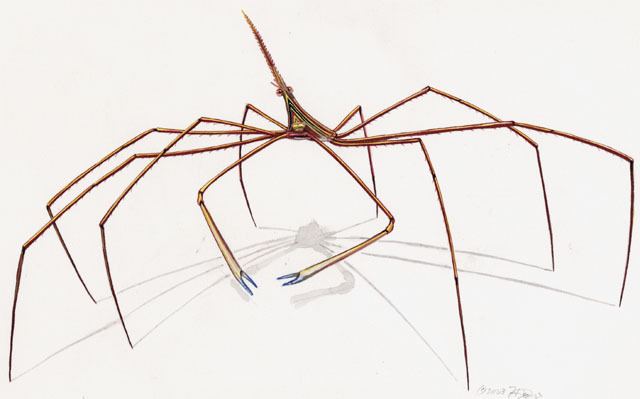 | ||
Similar Crab, Stenorhynchus, Crustacean, Mithraculus sculptus, Majoidea | ||
Stenorhynchus seticornis, the yellowline arrow crab or simply arrow crab, is a species of marine crab.
Contents
- Mvi 3350 stenorhynchus seticornis arrow crab eating bristle worm
- Description
- Distribution
- Ecology and behaviour
- Life cycle
- Taxonomic history
- References
Mvi 3350 stenorhynchus seticornis arrow crab eating bristle worm
Description
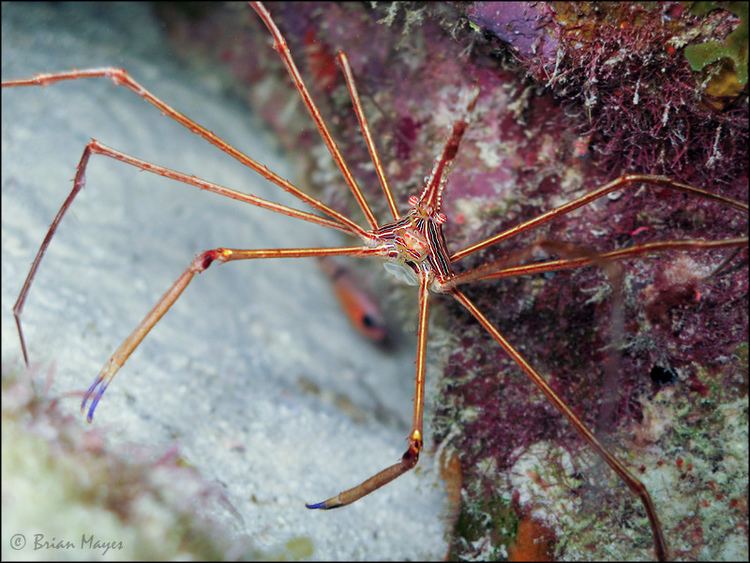
The body of S. seticornis is triangular, and the rostrum is drawn out into a long point with serrate edges. The legs are also long and thin, up to 10 cm (3.9 in) across, and the animal's carapace may be up to 6 cm (2.4 in) long. Colouration is variable in this species; the body may be golden, yellow or cream, marked with brown, black or iridescent-blue lines; the legs are reddish or yellow, and the claws are blue or violet.
Distribution
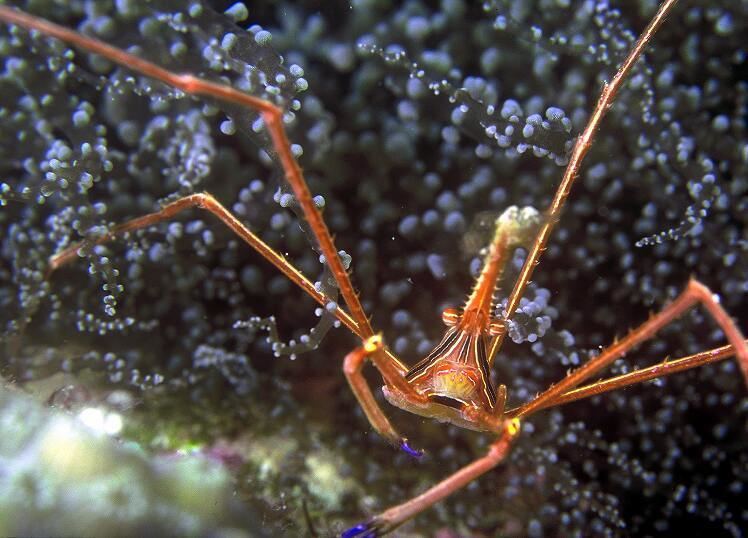
Stenorhynchus seticornis is found in the western and eastern Atlantic Ocean, from North Carolina and Bermuda to Brazil, including throughout the Caribbean Sea, also in the coastal waters of Cape Verde. It lives on coral reefs at depths of 10–30 feet (3.0–9.1 m).
Ecology and behaviour
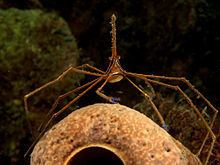
S. seticornis is nocturnal and territorial. It eats small feather duster worms and other coral reef invertebrates. This crab is commonly kept in reef aquariums to control bristle worm populations.
S. seticornis is one of a number of different invertebrates that are found living in association with the sea anemone, Lebrunia danae. It is often found among the anemone's pseudotentacles along with Pederson's cleaning shrimp (Ancylomenes pedersoni) and the spotted cleaner shrimp (Periclimenes yucatanicus).
Life cycle
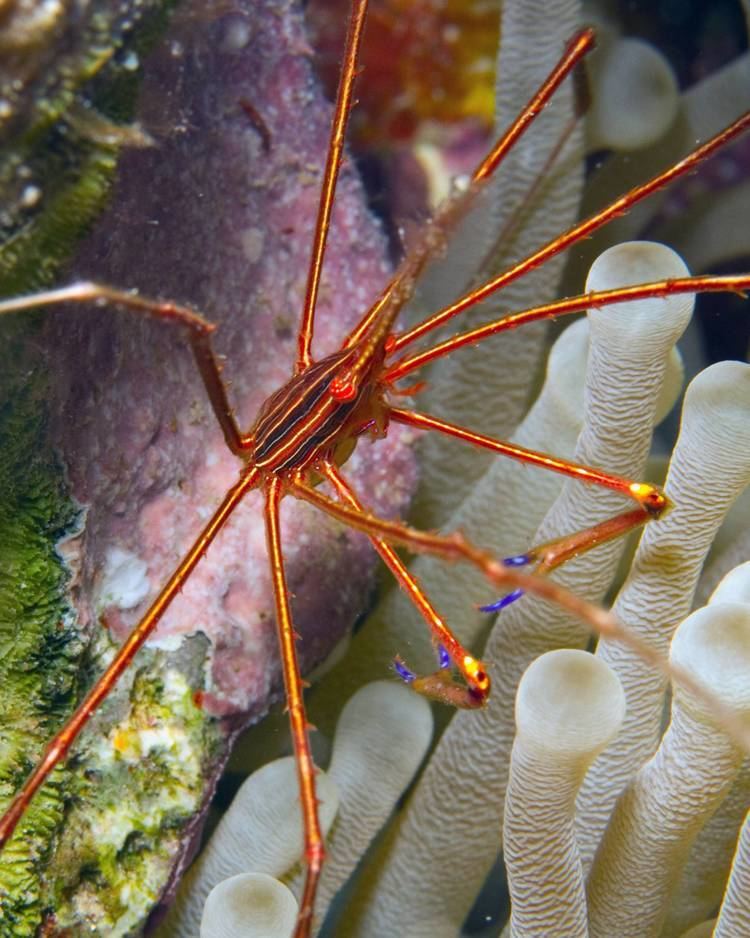
During mating, the male places a spermatophore on the female, which she uses to fertilise her eggs. These fertilised eggs are then carried on the female's pleopods until they are ready to hatch into zoea larvae. These swim towards the ocean surface and feed on plankton. They grow through a series of moults, and eventually metamorphose into the adult form.
Taxonomic history
Stenorhynchus seticornis was first described by Johann Friedrich Wilhelm Herbst in 1788, under the name Cancer seticornis. It was also described as "Cancer sagittarius" by Johan Christian Fabricius in 1793, a name which is now a junior synonym of S. seticornis. Pierre André Latreille erected the genus Stenorhynchus (originally mis-spelt Stenorynchus) in 1818, and S. seticornis was confirmed as the type species by the International Commission on Zoological Nomenclature in 1966.
